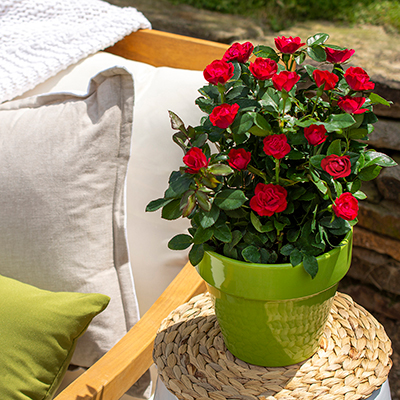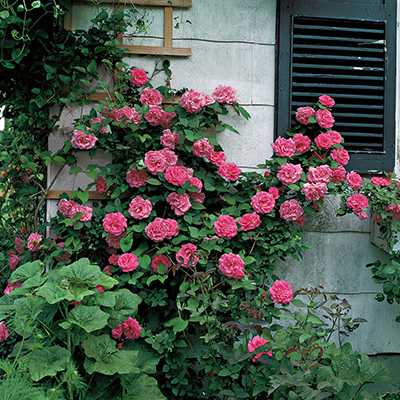How to Prune Roses

Published March 11, 2024
When you learn how to prune roses, you can shape your bushes, remove dead wood that might prevent new growth and help the bushes produce more flowers.
In general, hybrid teas and other shrub roses are pruned at the same time as the first fertilization, once the danger of frost has passed. Be safe and wear thick gardening gloves to protect your hands and arms from thorns while working with roses. Use this guide to learn how to prune roses.
Difficulty:
Beginner
Duration:
Under 2 hours
Table of Contents
How to Prune Roses and Remove Dead Growth
How to Prune Roses Step by Step
Pruning Tools
How to Care for and Maintain Roses
How to Prune Roses and Remove Dead Growth
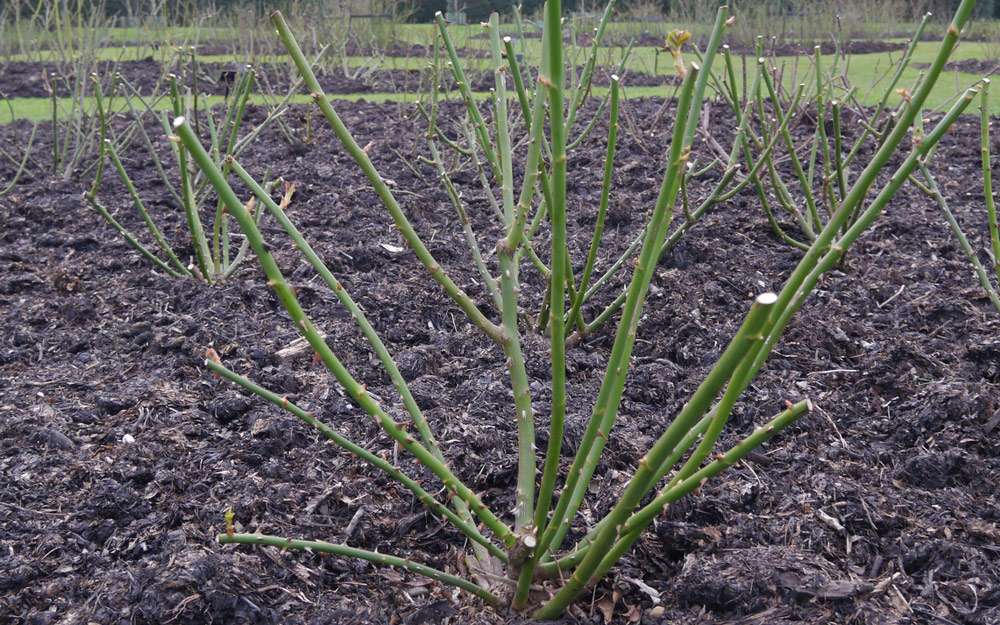
The best time to prune most roses is in late winter or very early spring, before the plants break dormancy (when the buds begin to swell), or when the plants are just starting to send out new growth in the form of tiny, red buds. This is around the time when forsythia bushes bloom.
Know your roses before you prune. Most types of roses can be pruned in early spring. This includes floribunda, hybrid tea, grandiflora, shrub, miniature and patio roses. Most standard climbing roses are the exception to this pruning rule. They typically bloom on old wood, so cutting them back in early spring would cut off new blooms. climbing roses should be pruned just after the flowers finish, although you can remove dead or unwanted branches at anytime.
In the summer, you can prune rose bushes to remove dead or diseased branches. Make the cuts one inch below the diseased branch, so only healthy wood remains. Summer is also the time to look for any branches in the center of the bush that are growing across each other. Prune away the weaker of the branches that cross each other. Also remove any suckers you find growing during the summer.
Keep in mind that small or unhealthy branches can be removed anytime during the season.
How to Prune Roses Step by Step

- Use clean, sharp tools. Carry disinfecting wipes with you into the garden to clean your pruners and reduce the chance of spreading plant diseases.
- Start at the bottom of the bush and work up. Prune less in the beginning. You can always go back and cut away more unwanted growth. Most mistakes grow back just fine.
- Prune dead wood back to living plant tissue with anvil pruners or loppers. You can recognize the living tissue by its green bark and white pith core.
- Cut at a 45-degree angle, about 1/4-inch above buds that face away from the center of the bush. Your goal is to open up the center, so the plants get plenty of sunlight and good air circulation. Shrub roses can be carefully pruned with electric hedge trimmers by trimming off about a third of the growth.
- Remove any shriveled, diseased or broken stems and other wood. Cut off twigs or branches that rub across or cross each other.
- Leave three to five strong, healthy branches, each 6 to 8 inches long, when cutting back hybrid tea roses. Leave eight to 10 branches on floribundas, each 8 to 12 inches long.
- Remove any suckers; these are stems that sprout from the roots. You may have to remove some soil to get to them. Cut suckers as close to the main root as possible.
- Cover the ends of the pruned canes and the sucker cuts with a little all-purpose white glue or super glue.
- Walk around the plant to ensure that your cuts are balanced and the bush has a symmetrical shape.
- Clean up around your plants and discard any pruned materials. If they show signs of pests or diseases, put them in the trash, not your compost pile.
Pruning Tools
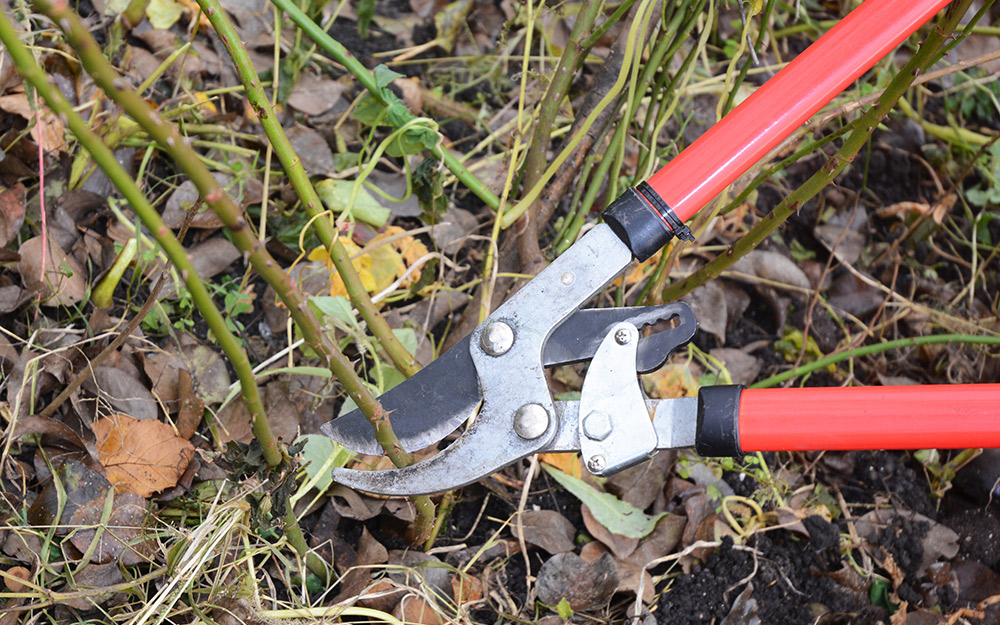
- Use bypass pruners to remove spindly growth (canes about as big around as a pencil) and suckers. You can also use them to remove any unwanted foliage from the canes.
- Prune thick canes with long-handled loppers.
- Shrub roses can be pruned with electric hedge trimmers. Simply trim off about a third of the growth.
- Remove woody old canes using a pruning saw. Saw off the old canes as close to the bud union as possible.
- Keep floribunda rose bushes tidy during the growing season by using floral snips or scissors to cut off clusters of spent flowers.
How to Care for and Maintain Roses
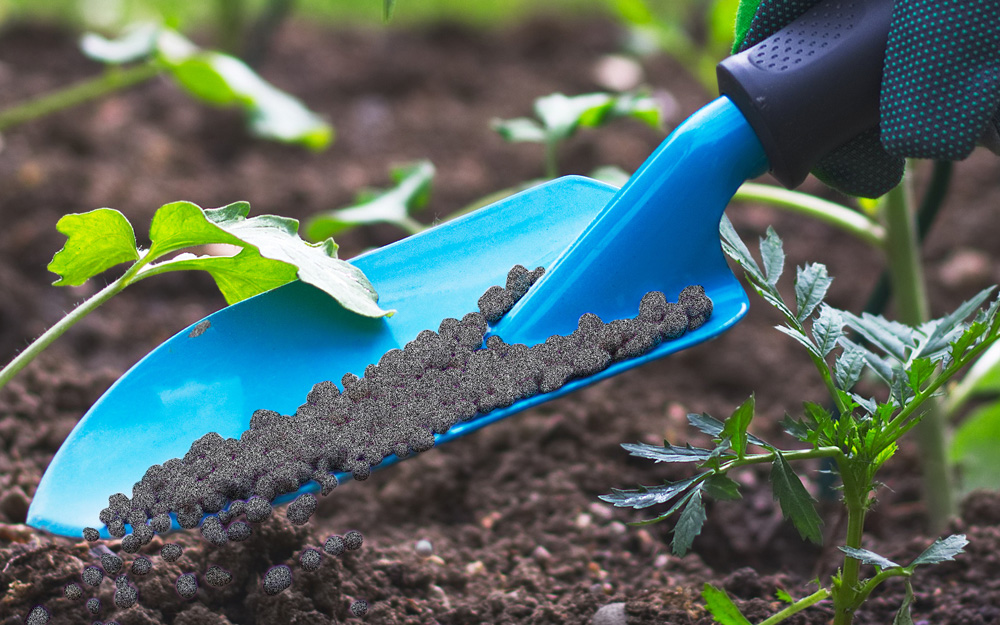
Most roses need a couple of years in the ground before they really thrive. Roses also need plenty of sun. The more sun they have, the more flowers they can make. Plant them where they’ll get a minimum of six hours of sunlight a day.
Roses don't do well when their roots stay wet, so don't plant them in areas that drain slowly or stay wet. If you’re growing roses in planters, fill them with quality potting soil and make sure they have holes for drainage.
For best results before you plant new roses, check the pH of your garden soil and add soil amendments if necessary. The ideal pH for roses is around 6.5. You can buy a soil pH test kit or ask your local Extension Service office for a soil test. Soil that drains easily and contains nutrient-rich, organic materials will produce healthy plants and more flowers.
Follow information on the rose's tag or label to know how much space it needs. If information isn't available, a good rule of thumb is to provide twice the depth and twice the width of the root structure when the bush is planted. Rose roots don’t like to be crowded, so also remember that rule when planting in containers.
In general, roses grow better and bear more flowers with fertilizer. The first application is typically done after the danger of frost has passed in your region. Roses are very hungry plants and can be fed with plant and flower fertilizer.
Follow the directions on the product for the amount of fertilizer needed. Keep feeding them throughout the growing season as the directions indicate.
Water your plants thoroughly when you first plant them and then again about once a week if rainfall is scarce. Roses respond better to water applied to the ground rather than from overhead, so soaker hoses or drip irrigation systems are helpful.
After you plant your bushes, apply a 2- to 3-inch thick layer of mulch around them. This helps retain moisture in the soil and discourages weeds from sprouting.
Once you've learned how to prune roses, you'll be on your way to growing bouquets of beautiful, fragrant flowers. Whether you need the right tools or plants, The Home Depot delivers online orders when and where you need them.
